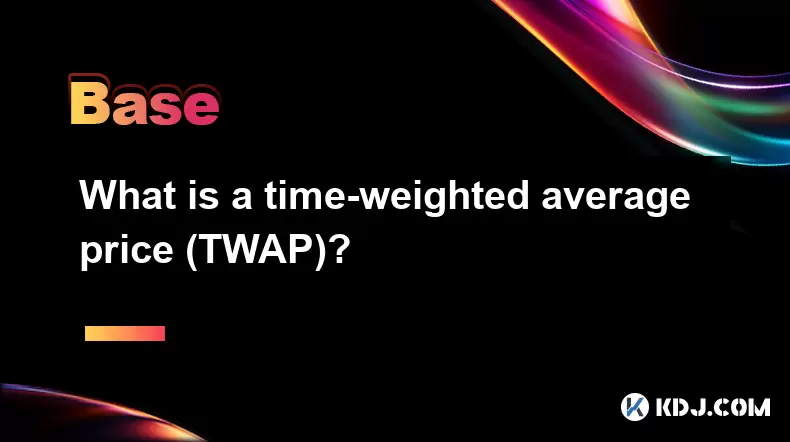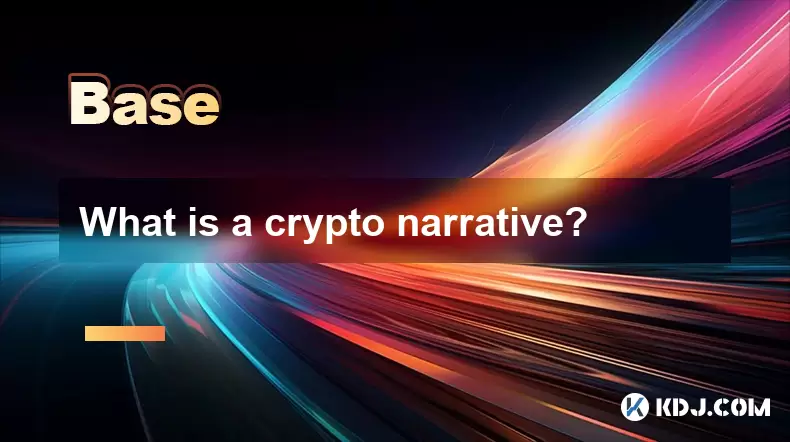-
 Bitcoin
Bitcoin $107,810.8710
-1.45% -
 Ethereum
Ethereum $2,531.4386
-1.75% -
 Tether USDt
Tether USDt $1.0000
-0.03% -
 XRP
XRP $2.2542
-0.99% -
 BNB
BNB $659.1350
-0.50% -
 Solana
Solana $148.5456
-2.40% -
 USDC
USDC $0.9999
-0.02% -
 TRON
TRON $0.2868
-0.44% -
 Dogecoin
Dogecoin $0.1666
-3.65% -
 Cardano
Cardano $0.5751
-2.36% -
 Hyperliquid
Hyperliquid $37.6845
-5.51% -
 Bitcoin Cash
Bitcoin Cash $494.9448
-0.65% -
 Sui
Sui $2.8396
-3.31% -
 Chainlink
Chainlink $13.2423
-2.59% -
 UNUS SED LEO
UNUS SED LEO $9.0482
0.02% -
 Stellar
Stellar $0.2467
-2.44% -
 Avalanche
Avalanche $17.8165
-3.63% -
 Shiba Inu
Shiba Inu $0.0...01158
-2.41% -
 Toncoin
Toncoin $2.7397
-3.42% -
 Hedera
Hedera $0.1560
-2.73% -
 Litecoin
Litecoin $85.8559
-2.34% -
 Monero
Monero $315.3710
-2.30% -
 Dai
Dai $1.0001
0.00% -
 Polkadot
Polkadot $3.3443
-2.03% -
 Ethena USDe
Ethena USDe $1.0001
0.01% -
 Bitget Token
Bitget Token $4.2888
-3.73% -
 Uniswap
Uniswap $7.3388
-1.57% -
 Aave
Aave $278.2986
-3.05% -
 Pepe
Pepe $0.0...09807
-3.67% -
 Pi
Pi $0.4563
-2.39%
What is a time-weighted average price (TWAP)?
TWAP calculates an asset's average price over time, used in DeFi to prevent manipulation and provide stable pricing data.
Jul 08, 2025 at 06:14 am

Understanding Time-Weighted Average Price (TWAP)
The Time-Weighted Average Price (TWAP) is a metric used in financial markets, including cryptocurrency trading, to calculate the average price of an asset over a specific time period. Unlike other averages that may be influenced by short-term volatility, TWAP assigns equal weight to each time interval, making it especially useful for evaluating fair pricing over extended durations.
In decentralized finance (DeFi) and automated market makers (AMMs), TWAP is frequently used to mitigate manipulation and provide more stable pricing data. This method helps traders and protocols assess historical prices without distortion from sudden price spikes or dips.
How TWAP Works
To compute TWAP, you take the average price of an asset at regular intervals during a defined period. Each interval's price is multiplied by the duration of that interval, and then the total is divided by the overall time frame.
Here’s a simplified breakdown:
- Record the price of the asset at fixed intervals (e.g., every 5 minutes).
- Multiply each price by the time between measurements.
- Sum all the weighted prices.
- Divide the sum by the total time period.
This process ensures that longer periods with consistent prices have a greater impact on the final average than shorter ones, even if the price fluctuates rapidly in between.
Differences Between TWAP and Other Averages
There are several types of average price mechanisms used in crypto and traditional finance, but TWAP differs significantly from Volume-Weighted Average Price (VWAP).
While VWAP considers both time and trading volume, TWAP only accounts for time. This distinction makes TWAP less susceptible to manipulation, especially in low-volume or illiquid markets where large trades can skew VWAP readings.
Another difference lies in use cases:
- TWAP is often employed in DeFi protocols like Uniswap v3 for oracle implementations.
- VWAP is more common in centralized exchanges and institutional trading strategies.
Additionally, TWAP avoids giving undue influence to high-volume trades, which can distort price perception in volatile environments such as cryptocurrency markets.
Use Cases of TWAP in Cryptocurrency
In the cryptocurrency space, TWAP plays a crucial role in various applications:
- Decentralized Exchanges (DEXs): Protocols like Uniswap use TWAP oracles to prevent flash loan attacks and ensure accurate pricing over time.
- Lending Platforms: TWAP helps determine collateral values by smoothing out short-term volatility.
- Algorithmic Stablecoins: These rely on TWAP to stabilize their peg against fiat currencies by referencing average prices rather than instantaneous values.
- Trading Bots: Some bots utilize TWAP to execute trades based on long-term trends instead of reacting to temporary market noise.
These use cases highlight how TWAP contributes to more secure and predictable financial systems within DeFi and beyond.
Implementing TWAP: A Step-by-Step Guide
If you're building a system that requires TWAP implementation, here’s how to do it effectively:
- Choose a time interval that suits your needs — for example, every 10 minutes.
- Fetch historical price data for the selected asset using APIs like CoinGecko, CryptoCompare, or exchange-specific endpoints.
- Store timestamps and corresponding prices in a structured format.
- Calculate the time-weighted component for each interval by multiplying the price by the time difference between consecutive records.
- Sum all the weighted components to get the numerator.
- Add up all time intervals to get the denominator.
- Divide the total weighted value by the total time to derive the TWAP.
For developers integrating TWAP into smart contracts:
- Use libraries like Uniswap v3 Oracle to fetch TWAP directly from on-chain data.
- Ensure your contract includes logic to query observations and perform calculations accurately.
- Handle edge cases like missing data points or timestamp inconsistencies.
Challenges and Considerations When Using TWAP
Despite its benefits, TWAP has limitations that users should consider:
- Lagging Indicator: Since it relies on historical data, TWAP may not reflect real-time market conditions accurately.
- Data Granularity: The accuracy of TWAP depends heavily on the frequency of recorded price points.
- Time Zone Sensitivity: If intervals cross daylight saving changes or different time zones, discrepancies can occur.
- Manipulation Risks in Short Windows: Although less prone than others, TWAP can still be manipulated over very short intervals.
Protocols must carefully choose the observation window and update frequency to balance responsiveness and stability.
Frequently Asked Questions
Q: Can TWAP be used across multiple assets simultaneously?
Yes, TWAP can be applied to multiple assets independently. However, comparing TWAP values across different assets isn’t meaningful unless they share similar volatility profiles and timeframes.
Q: Is TWAP suitable for high-frequency trading strategies?
Not typically. Due to its reliance on historical data and time-based weighting, TWAP is better suited for medium to long-term strategies rather than fast-paced trading environments.
Q: How does TWAP differ from simple moving averages (SMA)?
SMA gives equal weight to all price points, regardless of when they occurred. In contrast, TWAP weights each price by the time it persisted, offering a more nuanced view of price behavior over time.
Q: Are there tools available to calculate TWAP automatically?
Yes, many platforms and programming libraries offer TWAP calculation functions. For example, Python libraries like Pandas can handle TWAP computations efficiently, and DeFi protocols often include built-in TWAP oracles.
Disclaimer:info@kdj.com
The information provided is not trading advice. kdj.com does not assume any responsibility for any investments made based on the information provided in this article. Cryptocurrencies are highly volatile and it is highly recommended that you invest with caution after thorough research!
If you believe that the content used on this website infringes your copyright, please contact us immediately (info@kdj.com) and we will delete it promptly.
- Meme Coins 2025: Presale Surge and ETF Hopes?
- 2025-07-08 12:30:11
- Gate.io, Pump.fun, and the Mysterious Token Sale: What's the Deal?
- 2025-07-08 12:30:11
- Pi Coin Price Prediction Today: Is a Breakout Imminent?
- 2025-07-08 12:50:11
- XRP, Breakout, and Altcoins: Navigating the Crypto Rollercoaster
- 2025-07-08 12:50:11
- BlockDAG Leads the Web3 Race with Sports Partnerships and Strategic Pricing
- 2025-07-08 10:50:12
- Pepe, Dogecoin, Shiba Inu: Meme Coin Mania or Calculated Crypto?
- 2025-07-08 10:30:12
Related knowledge

What is a user-generated content (UGC) NFT platform?
Jul 04,2025 at 01:49pm
Understanding the Concept of a UGC NFT PlatformA user-generated content (UGC) NFT platform is a digital marketplace or ecosystem where users can create, mint, and trade non-fungible tokens (NFTs) that represent ownership of original digital content they produce. Unlike traditional NFT platforms where creators often include professional artists or develo...

What is composability in DeFi?
Jul 06,2025 at 04:07pm
Understanding the Concept of Composability in DeFiComposability in DeFi refers to the ability of decentralized finance protocols and smart contracts to interact seamlessly with one another, much like building blocks that can be combined in various ways to create new financial products and services. This concept is a core innovation within the DeFi ecosy...

What is a "crypto primitive"?
Jul 05,2025 at 10:14pm
Defining the Concept of a Crypto PrimitiveIn the context of blockchain and cryptocurrency, a crypto primitive refers to a fundamental building block or foundational element used in constructing decentralized systems and cryptographic protocols. These primitives are essential for enabling secure transactions, consensus mechanisms, and smart contract exec...

What is a crypto narrative?
Jul 07,2025 at 10:56pm
Defining the Concept of a Crypto NarrativeA crypto narrative refers to the overarching story or theme that drives interest, investment, and development within a particular segment of the cryptocurrency market. Unlike traditional financial assets, cryptocurrencies often gain momentum not solely based on technical merits but through compelling narratives ...

What is a stealth launch?
Jul 08,2025 at 06:42am
What Exactly Defines a Stealth Launch in Cryptocurrency?A stealth launch refers to the practice of launching a cryptocurrency project without prior public announcement or marketing efforts. This method is often used by development teams who prefer to keep their project under wraps until it reaches a certain level of maturity, adoption, or liquidity. Unl...

What is a fair launch?
Jul 05,2025 at 07:31pm
Understanding the Concept of a Fair LaunchA fair launch refers to the release of a cryptocurrency or blockchain project in a manner that ensures equal opportunity for all participants. Unlike traditional token launches, which may involve private sales, venture capital funding, or pre-mining, a fair launch emphasizes transparency and decentralization. In...

What is a user-generated content (UGC) NFT platform?
Jul 04,2025 at 01:49pm
Understanding the Concept of a UGC NFT PlatformA user-generated content (UGC) NFT platform is a digital marketplace or ecosystem where users can create, mint, and trade non-fungible tokens (NFTs) that represent ownership of original digital content they produce. Unlike traditional NFT platforms where creators often include professional artists or develo...

What is composability in DeFi?
Jul 06,2025 at 04:07pm
Understanding the Concept of Composability in DeFiComposability in DeFi refers to the ability of decentralized finance protocols and smart contracts to interact seamlessly with one another, much like building blocks that can be combined in various ways to create new financial products and services. This concept is a core innovation within the DeFi ecosy...

What is a "crypto primitive"?
Jul 05,2025 at 10:14pm
Defining the Concept of a Crypto PrimitiveIn the context of blockchain and cryptocurrency, a crypto primitive refers to a fundamental building block or foundational element used in constructing decentralized systems and cryptographic protocols. These primitives are essential for enabling secure transactions, consensus mechanisms, and smart contract exec...

What is a crypto narrative?
Jul 07,2025 at 10:56pm
Defining the Concept of a Crypto NarrativeA crypto narrative refers to the overarching story or theme that drives interest, investment, and development within a particular segment of the cryptocurrency market. Unlike traditional financial assets, cryptocurrencies often gain momentum not solely based on technical merits but through compelling narratives ...

What is a stealth launch?
Jul 08,2025 at 06:42am
What Exactly Defines a Stealth Launch in Cryptocurrency?A stealth launch refers to the practice of launching a cryptocurrency project without prior public announcement or marketing efforts. This method is often used by development teams who prefer to keep their project under wraps until it reaches a certain level of maturity, adoption, or liquidity. Unl...

What is a fair launch?
Jul 05,2025 at 07:31pm
Understanding the Concept of a Fair LaunchA fair launch refers to the release of a cryptocurrency or blockchain project in a manner that ensures equal opportunity for all participants. Unlike traditional token launches, which may involve private sales, venture capital funding, or pre-mining, a fair launch emphasizes transparency and decentralization. In...
See all articles

























































































